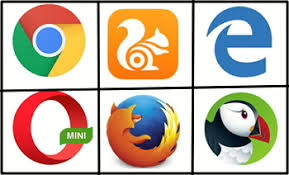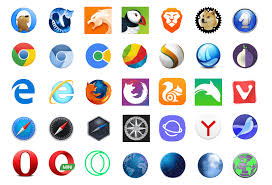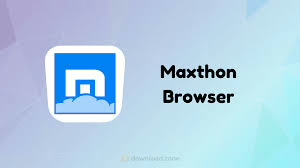The internet browser wars ignited on August 9, 1995, when Netscape made a splash with its initial public offering (IPO). The company set its share price at $28, a daring choice for a business banking on the success of just one software product: Netscape Navigator. By the end of that trading day, however, shares skyrocketed to over $70 each, catapulting the company’s market value close to $2 billion. At that moment, Netscape’s IPO was the largest in Wall Street’s history. Navigator had quickly become the go-to browser for those exploring the nascent World Wide Web; it was often the first experience users had online.

This monumental IPO did not go unnoticed by Microsoft (MSFT), whose stronghold on personal computer operating systems made it inevitable that they would join the fray of browser competition.
Key Takeaways
The term browser war refers to the fierce competition among companies vying for dominance in web browser usage. Netscape Navigator was notable as the first commercially available web browser with a graphical user interface, significantly enhancing user experience on the World Wide Web. For a brief period, it held sway as the leading internet browser. The launch of Netscape’s IPO marked a pivotal moment during the internet boom era. Coincidentally, Microsoft also released its inaugural version of Internet Explorer that same year. With an immense advantage at hand—its ability to bundle Internet Explorer with its widely used operating system—Microsoft could prominently feature its browser in most new personal computers sold.

Understanding the Browser Wars
Since 1985, Microsoft Windows has established itself as the prevailing operating system after manufacturers sought customers beyond hobbyists in early personal computing. A decade later, leveraging this dominance proved advantageous; Microsoft could easily integrate Internet Explorer 1.0 into their Windows 95 operating system and offer it free with new PCs—a strategy reminiscent of what Netscape had done earlier.
The Rise and Fall of Netscape
In the early days of the internet, a pioneering web browser was born in a computer lab at the University of Illinois. Originally named Mosaic, it was later rebranded as Netscape. While it wasn’t the first search engine to hit the scene, it distinguished itself by being the first to feature a graphical user interface (GUI). Before Netscape, users had to type text commands to access websites, but with this new browser, they could simply click on icons or select options from menus. Although its graphics were rudimentary by today’s standards, they were vibrant and engaging.

Marc Andreessen spearheaded the development team behind this innovative software alongside entrepreneur Jim Clark. In 1995, they took Netscape public, marking a significant milestone in tech history.
The Browser Wars Begin
During the 1990s, online advertising had yet to prove to be a stable source of income for many companies on the World Wide Web. Unlike Netscape, which primarily generated revenue through sales of its Navigator browser software, Microsoft was already an established powerhouse in the software industry. It profited by licensing its operating system to hardware manufacturers and selling complementary products like Word and Excel. This disparity created an uneven playing field between these two companies.

Netscape continually enhanced its browser with new features to attract users. In response, Microsoft quickly integrated similar functionalities into Internet Explorer. As Netscape introduced exclusive features into Navigator, Internet Explorer countered with its offerings. This ongoing competition led to what became known as featuritis, causing both browsers to become slower and more prone to bugs while fragmenting web experiences into two distinct realms—one optimised for Navigator and another for Internet Explorer.
Realising that survival depended on adapting to market demands, Netscape made a pivotal decision in January 1998: it eliminated its subscription fee.
Government Intervention
As the battle between Microsoft and Netscape drew closer to an anticipated conclusion favouring Microsoft’s dominance, government authorities stepped in. In 1998, the U.S. Department of Justice joined forces with attorneys general from twenty states to file a lawsuit against Microsoft for allegedly breaching antitrust laws. The accusations centred around Microsoft’s practice of bundling its software products with its operating system—an action deemed anti-competitive and detrimental to fair market practices.
Enter Google
Microsoft enjoyed a period of success, but it didn’t last indefinitely. In 1998, Google burst onto the technology landscape with a revolutionary concept. Unlike conventional search engines like Internet Explorer, which generated results based on the frequency of search terms found on web pages, Google introduced a novel approach. It evaluated web pages based on how often they were linked to other sites, effectively gauging their significance through user engagement.

The Post-Browser Wars Era
As of January 2022, Google dominated the global search engine market with an impressive 91.9% share. In contrast, Microsoft’s Bing captured only 2.88%, while Yahoo! trailed with 1.51%. The remaining market is divided among Yandex (the leading search engine in Russia), Baidu (a Chinese platform), and DuckDuckGo (an American option favoured by those who prioritise privacy and minimal data tracking).
A Closer Look at U.S. Figures
In the United States specifically, Google’s share is slightly lower at 87.8%, followed by Bing at 6.17% and Yahoo! at 3.13%.
Mobile Market Dynamics

When it comes to mobile browsers—an innovation that didn’t exist during the era of Navigator—the statistics have shifted significantly as of January 2022. Google’s Chrome leads this sector with a commanding 63.06% market share, while Apple’s Safari holds second place at 19.84%. Other contenders include Firefox, Microsoft’s Edge (which has a share of 4.12%), Samsung Internet, and Opera.
The Origin of Web Browsers

The very first internet browser was named WorldWideWeb by its creator, Tim Berners-Lee, in 1990, when he invented the World Wide Web. Later, to avoid confusion between the application and its content, this original browser was eventually renamed Nexus.
Maxthon
Maxthon is a web browser that was first launched in 2002 by Jeff Chen. Branded initially as MyIE2, it quickly gained popularity due to its innovative features, which included tabbed browsing and a customisable interface.

In 2003, the browser was officially renamed Maxthon, signalling its evolution from a simple Internet Explorer skin to a more complex and capable standalone product. Over the years, Maxthon has emphasised performance and user experience, frequently updating its engine to support modern web standards.
By integrating cloud services in later versions, Maxthon carved out a niche for itself among users who valued cross-device synchronisation of bookmarks and settings. The browser is built on both Trident (Internet Explorer) and WebKit engines, allowing it to render pages efficiently.
A unique highlight of Maxthon is its use of “Cloud Browser” technology, which lets users access their browsing data from any device with internet connectivity. As of today, Maxthon continues to adapt to the rapidly changing digital landscape while maintaining a loyal user base drawn by its distinctive features.
